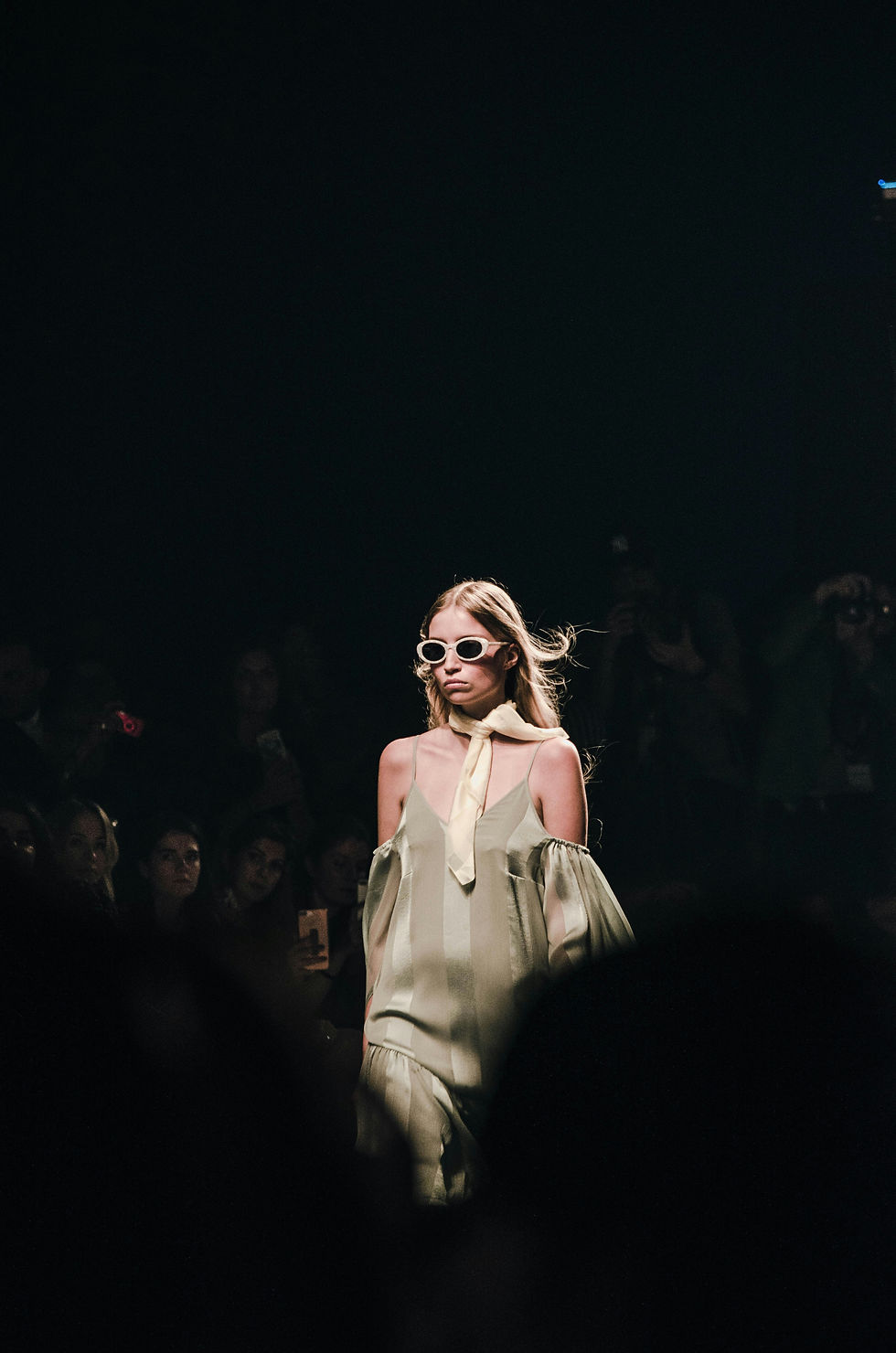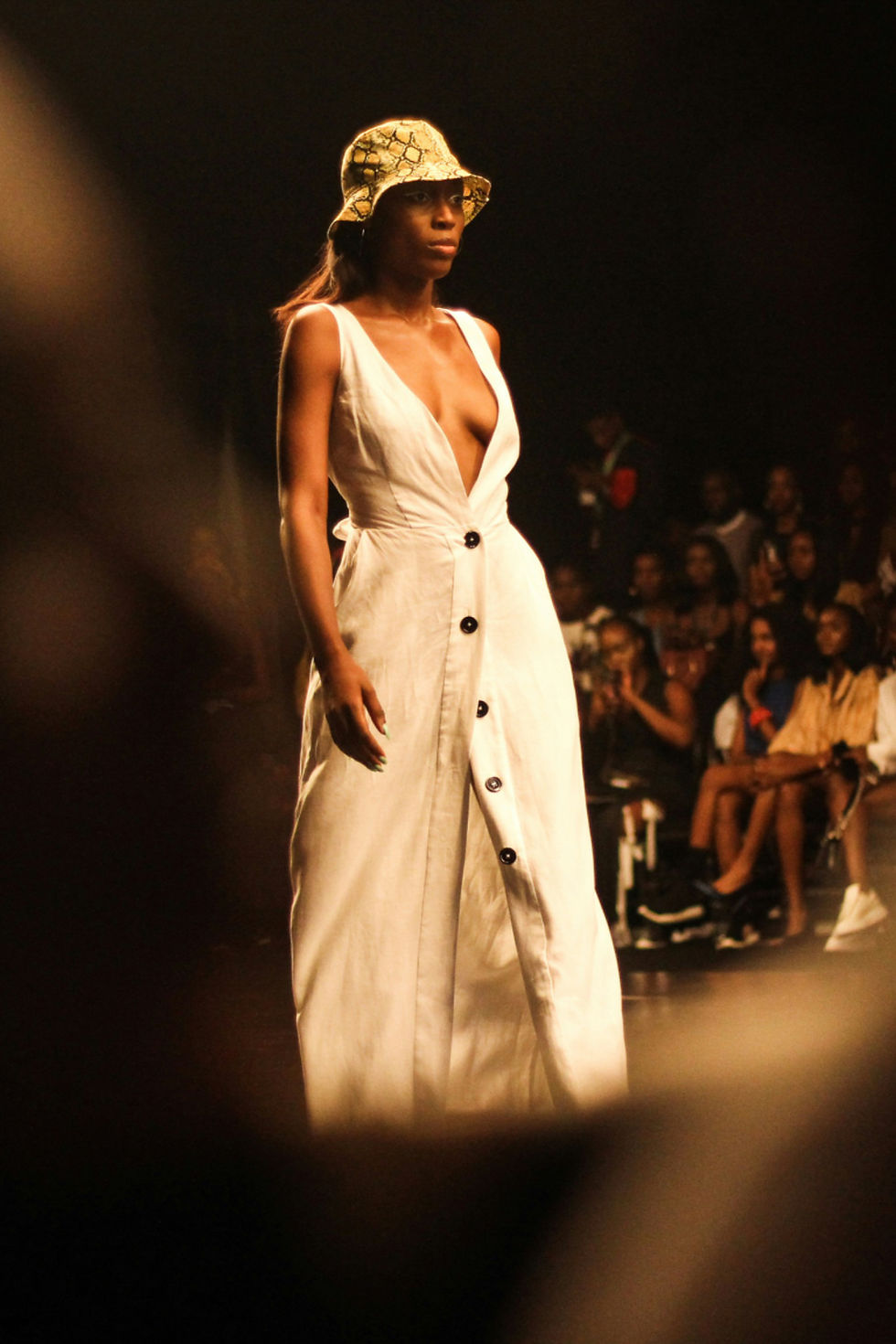The Trends of New York Fashion Week 2025
- Lauren Delany
- Feb 20
- 3 min read
The fashion industry is arguably one of the most prolific CCIs. Fashion is a reflection of our individual values, interests, and our mood. However, it extends beyond a method of self expression. Fashion, both on the individual and society level, reflects ideas of gender, sexuality, culture, socioeconomic status.
Events like Fashion Week are performances of these ideas. Designers bring forth luxury, but also tell stories with their collections. They find inspiration in these reflections, often playing with ideas of gender and culture. The ideas seen in Fashion Week often become part of popular style in the years that follow.
New York Fashion Week took place from February 6 to February 11. World renowned designers gathered to present the future of fall and winter fashion. Here are some of the most talked about trends from this year's fashion week:

Thom Browne’s collection showed off the exceptional tailoring the designer is known for. His collection of formal wear gave business-ready clothes a whimsical twist. The runway, held at The Shed in Hudson Yards, was filled with hundreds of white origami birds, both suspended in the air and decorating the ground. The birds symbolized the theme of Browne’s collection, “Freedom”. His collection featured exaggerated silhouettes with oversized skirts and coats, all born from the classic gingham shirt (Dylan Kelly, Hypebeast Group).
Marc Jacobs’ collection, “Courage”, turned runway models into full sized dolls. Similarly to Browne, Jacobs also featured a collection full of exaggerated silhouettes but while Browne’s collection focused on tailoring and structure, Jacobs’ looks were very theatrical. Hosted at New York Public Library, “Courage” showed lots of bright colors with a notable skirt shape that cartoonishly accentuates the models hips (Tara Gonzalez, Who To Wear).
Another trend seen at this year’s fashion week is maximalism. Designers strayed away from the minimal sleek looks of past years, and instead filled their collections with patterns and embellishments. Anna Sui’s ready-to-wear collection, for example, utilized bold patterns and accessories throughout: fur coats, knit sweaters, lace tops, corduroy hats, chucky belts, and more. Sui’s collection was titled “Madcap Heiress” as it was designed to tell the story of a fabulous woman who spends her inherited fortune on jewelry and luxury items (Thomas Waller, Women's Wear Daily).

Many collections included more traditional aesthetics. Lorena Pipenco and Rodarte were two designers who were inspired by dark romantic and gothic influences. Pipenco retold the story of Dracula. However, Pipenco wanted to focus her story on the woman affected by him instead of the Dracula character himself. Her designs featured highly cartoonish shapes, from large top hats to puffy collars, all inspired by the famous gothic novel (Katya Moorman, No Kill Magazine).
Rodarte’s show, held at Williamsburg Bank, dressed models to look like gothic fairies. The collection primarily showed dark makeup and a wardrobe consisting of black lacing, feathers and beads. Rodarte ended the collection with a sudden shift into color, continuing the whimsical silhouettes, but now with bright eye-catching sparkles (Godfrey Deeny, Fashion Network).
Designers Grace Gui and Collina Strada placed an emphasis on sustainability and ethical sourcing with their collections. The fabric used in Gui’s collection was made using fabric sourced from independent female farmers. Her collection centered around heritage, showcasing the everyday struggles of Asian American families. The collection's theme of legacy was elevated by her choice to use ethically sourced materials, promoting how fashion has a lasting impact on the environment (Hailei Wynter, 1202 Magazine).

Collina Strada’s collection used upcycled materials to create avant garde fashion. The collection was inspired by ‘metamorphosis and resilience’ with a wide array of textures and colors in use. Strada’s designs hope to challenge fashion norms, pushing the boundaries of what is commonplace. Her goal on the runway, however, is to mirror society around her through a diverse selection of models. This diversity combined with the usage of sustainable materials, made Strada’s collection stand out at the event (Elaina Berstein, Hypebeast Group).
New York Fashion Week made bold statements about where the future of fall and winter fashion will be. For these designers, it lies in exaggerated silhouettes, heavy accessories, a mix of patterns and textures, classical storytelling influences, and sustainability. These trends all speak to larger aspects of culture. Unusual silhouettes often play with the female image, accessories are often used to show a certain level of wealth, and sustainability speaks to the practical needs of an evolving industry.





Comments